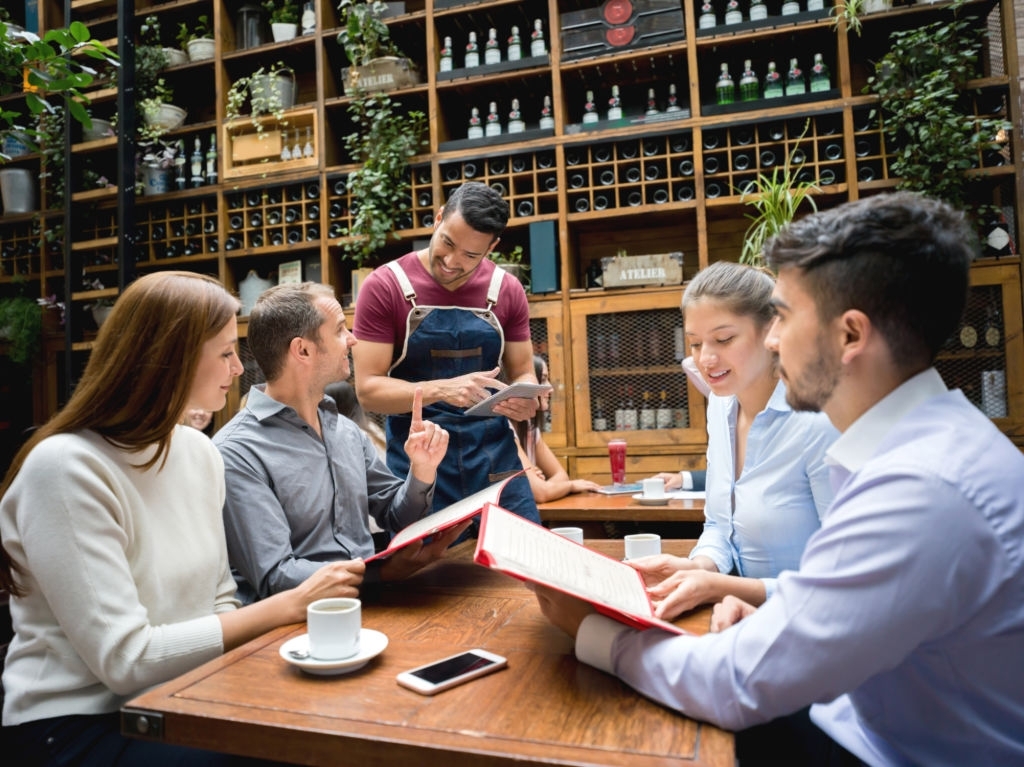Café 63 Menu Analysis And Redesign
Question
Task: Analyse the Café 63 menu from Assessment 1, and discuss its major shortcomings. Provide suggestions for redesigning the Café 63 menu to attract new customers.
Answer
Background of the Café
The Café 63 is located at the centre of West End, on Melbourne Street. The café attracts a high volume of customers from all across the town as it is located just steps away from the South Brisbane Station. The café is open seven days of the week and is an ideal place for a quick coffee break as well as a Sunday brunch.

The Café 63 menu comprises of premium quality coffee sourced from the best suppliers in Australia. The café offers, different hot beverages including Tea and Coffee, and an incredible breakfast spread which is beloved by all members of the city. In addition to hot beverages, the Café 63 menu comprises of cold beverages, smoothies, fruit juice, snacks, sweet baked goods, savoury meals, breakfast options as well as dinner and lunch meals, with extras. They also provide takeaways in their product line for the fast-moving traffic of South Brisbane Station.
The Café is open for business from as early as 5:30 AM to 4:00 PM in the evening on Monday’s and Tuesday’s. It is because of the heavy traffic of people crossing the café on the busy mornings of the new week. Whereas, as the week progresses, people prefer to come by a little late; thus, the café opens from 5: 30 AM to 9:00 PM from Wednesday's to Sunday’s.
As opined by Filimonau and Krivcova(2017), the design and the presentation of the menu represent the operational system of any hospitality establishment and play an important role in its success. The current café 63 menu adopts a-la-carte approach, in the dishes offered by the café are categorised by courses and the portion sizes are also described distinctly (Souki, Antonialli, Barbosa, & Oliveira, 2019). As per Noone and Cachia, a restaurant or eatery is classified as a café according to the product line or the dishes it offers to its customers in its menu.
Analysis of Present Café 63 Menu
The current Café 63 menu is quite elaborate and offers a wide variety of options to the consumers. The menu is classified into different sections that include hot beverages such as different teas, coffee, espresso, and latte etc., cold beverage such as juices, smoothies, cold coffee and iced tea, etc. In addition to beverages, the menu also includes meals of varying proportions for different meal timings such as breakfast, lunch, snacks, etc. as well as extras which include, dinner rolls, garlic breadsticks, etc. Some of the extras are offered complimentary without any additional charges. The total number of options available in the Café 63 menu is 37, which could be broken down further as some dishes comprise of multiple elements.

The nutritional value provided by the dishes at Café 63 is the highest than all other established in the city. The recipes are carefully selected so as to keep their nutritional value intact and offer the healthiest dietary contents to the customers (DiPietro, Remar, & Parsa, 2016). One apt testament to this is that the juices offered by the café are all freshly squeezed in house form the organically grown fruits which include carrots, pineapples, mangoes, strawberries, pomegranate and other tropical fruits native to the Australian subcontinent. It offers the highest quality and quantity of vitamins and nutrients to the customers. The dishes are offered in breakfast is whole grain, and gluten-free to attract customers of different tastes and preferences (Kaur & Davar, 2018). The café also provides fresh artisanal items such as cookies and brownies, which are loved by the passengers as they can eat them on the go.
What are the recommendations for redesigning of Café 63 Menu?
A menu is considered as one of the most important aspects of any café or restaurant as it brings out the personality and qualities of the establishment. A good menu catches the customer’s attention while providing a succinct description of the most popular and valued items on the menu (Nemeschansky, Heidt, & Kim, 2019)). The current café 63 menu fails to employ the psychological concepts that come into play when designing any menu or pamphlet. It fails to capture the persona of the Café, which is evident from its popularity and product line (Hou, Sun, Wan, & Yang, 2018). The menu also fails to categorise entries, which are the most important aspect of any meal as they are served at the beginning. The menu should be captivating and entice the consumers to order by feeding their imaginations. By creating an enchanting menu, the customers' taste buds become active, and thus they are prompted to offer the best dish from the options. It urges customers to spend more money on food than they had anticipated. The menu also fails to highlight the healthy aspects and the organic sourcing of their products which can serve as an appealing factor in the decision making of the consumer.
The Café 63 menu should adopt changes which highlight their strengths that separate them from the competition, such as the nutritional values provided in their food. The menu should also highlight the sourcing of the products and the freshness of the ingredients. The concept of the golden triangle design can be adopted in the menu by placing the most highly valued dishes at the centre of the Café 63 menu. It is because the eyes of the customers go directly at the centre of the menu once as soon as they open it, before looking over to other sections of the menu.

The menu appears plain and insipid as it doesn’t incorporate colours. The choice of colours used in a menu can suggestively impact the choices made by the consumers (Alhelalat, Ma’moun, & Twaissi, 2017). The colours red, yellow, white, orange and blue are found to grab the customer’s attention and stimulate their appetite as well. It can be seen in the application on the logos and colour themes adopted by major multinational food chains such as McDonald's, KFC, Pizza Hut and Burger King.
The present Café 63 menu also fails to price the dishes appropriately, as the prices influence how much the customers will be spending on food upon entering the café (Baiomy, Jones, & Goode, 2019). Therefore the café must use the vital pricing strategy to not round off their prices. For example, instead of charging $10 for a dish, the café should put $9.99. It has a significant effect on the minds of the consumers.
Just like a retail store has a salesman, a café has its menu to serve in place of a salesman. As the sales team are the driving force of any business, the menus serve to increase the sales of any restaurant. Therefore it is important to pay stress in creating a well-made menu. Having a new Café 63 menu with all above-mentioned changes will go a long way for the establishment.
References
Alhelalat, J., Ma’moun, A., & Twaissi, N. M. (2017). The impact of personal and functional aspects of restaurant employee service behaviour on customer satisfaction. International Journal of Hospitality Management, 66, 46-53.
Baiomy, A., Jones, E., & Goode, M. (2019). The influence of menu design, menu item descriptions and menu variety on customer satisfaction. A case study of Egypt. Tourism and Hospitality Research, 19(2), 213-224.
DiPietro, R., Remar, D., & Parsa, H. (2016). Health consciousness, menu information, and consumers’ purchase intentions: An empirical investigation. Journal of Foodservice Business Research, 19(5), 497-513.
Filimonau, V., & Krivcova, M. (2017). Restaurant menu design and more responsible consumer food choice: An exploratory study of managerial perceptions. Journal of cleaner production, 143, 516-527.
Hou, Y., Sun, Y., Wan, L., & Yang, W. (2018). How can psychological contagion effect be attenuated? The role of boundary effect on menu design. Journal of Hospitality & Tourism Research, 42(4), 606-626.
Kaur, P., & Davar, V. (2018). Nutritional quality analysis of green salad served at selected restaurants.
Nemeschansky, B., Heidt, T. v., & Kim, P. B. (2019). Customer-driven menu analysis (CDMA): Capturing customer voice in menu management. International Journal of Hospitality Management, 102417.
Noone, B., & Cachia, G. (2020). Menu engineering re-engineered: Accounting for menu item substitutes in pricing and menu placement decisions. International Journal of Hospitality Management, 87, 102504.
Souki, G., Antonialli, L., Barbosa, A. d., & Oliveira, A. (2019). Impacts of the perceived quality by consumers’ of à la carte restaurants on their attitudes and behavioural intentions. Asia Pacific Journal of Marketing and Logistics.












